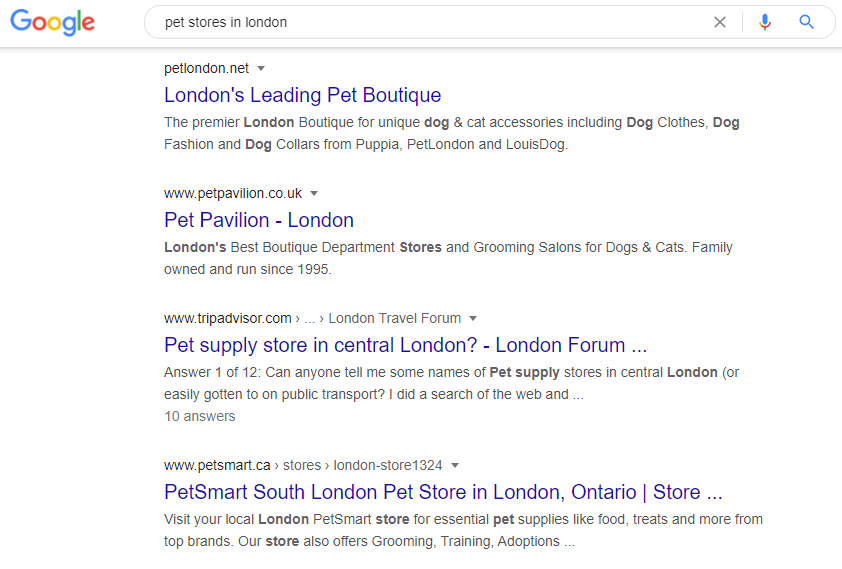Small businesses that want to get more customers and grow their brands need marketing and advertising techniques intended to attract an interested audience. That’s where inbound marketing comes in. Small businesses can use inbound marketing strategies like content marketing and search engine optimization to compete with larger competitors and get more customers.

In this post, we’ll cover the details you need to know about inbound marketing, like:
- What inbound marketing is.
- How inbound marketing differs from outbound marketing.
- Why your business needs to invest in an inbound marketing strategy.
- The five most important elements of an inbound marketing strategy for your small business.
What Is an Inbound Marketing Strategy?
Inbound marketing creates a funnel of new customers by attracting people to your business (and often, your business website) by providing content and experiences they find valuable. An inbound marketing strategy can include content marketing, video content, search engine optimization (SEO), PPC, and landing pages on your website.
Inbound Marketing vs. Outbound Marketing: What’s the Difference?
Outbound marketing, on the other hand, is when you directly reach out to potential customers to see if they are interested in your product or service and involve in sending out more generalized advertising messages. Outbound marketing includes display advertising, TV commercials, billboards, and more.
In contrast, inbound marketing strategies allow you to attract prospects who are likely more interested in what you have to offer and engage them with your marketing by informing or building a connection.

Why Small Businesses Need an Inbound Marketing Strategy
Small businesses need an inbound marketing strategy to help build relationships with customers and increase the chances of converting new leads into customers. Rather than simply pitching your customers your products or services, you instead create and share information on how your products can provide value for their lives.
Rather than competing with the volume of content and resources larger competitors are pushing out on a daily basis, your small business can focus on creating specific content that will best resonate with your audience to maximize your resources and build a connection with customers and prospects.
5 Elements of an Incredible Inbound Marketing Strategy for Your Small Business
Let’s take a look at how your small business can properly implement an inbound marketing strategy that effectively increases customer trust and make better use of your marketing budget.
1. Use Data to Inform Your Inbound Marketing Strategy
Small businesses only have so many resources and personnel to dedicate to their marketing plan, including their inbound marketing strategy. Tools that let you track leads through a sales funnel can provide insight into the inbound marketing tactics that are most successful for your business.

These tracking and reporting tools are essential to have as part of the foundation of your small business’s inbound marketing strategy.
Insight from your lead management software, such as information on current and previous customer interactions, can help you discover ideas and create a clearer customer profile that you can analyze and use to base content creation and other inbound marketing tactics like SEO.
2. Use SEO to Attract People to Your Site & Your Content
Inbound marketing is all about driving users to your website. So, using proper local SEO techniques to help customers find your small business’s website is one of the most important components of a successful inbound marketing strategy. Without SEO, it’s nearly impossible for searchers to find your website!

So, it’s important that your business is getting found on Google and attracting customers who are interested in your products and services to your website.
Related: Speaking of attracting people to your site…have you heard of attraction marketing? Learn more!
3. Invest in Content Marketing
Content marketing not only contributes to a successful SEO strategy, but it is also an important part of an inbound marketing strategy because it can provide valuable information for your most likely customers and give them a reason to visit your website.

There’s no denying that it can be difficult to hold your readers’ interest when they engage with your web content. That’s because customers have a multitude of other competitor sites they’re viewing on a daily basis.
The best strategy for creating quality content that engages your customers is to pay close attention to your existing content that has received the most views, comments, and attention. While you shouldn’t seek to replicate exactly what you already have, you should still try to create new content similar to what’s already proven to be successful.
It’s also important to vary the type of content that you’re creating and sharing as part of your content marketing. While creating a blog for your business is a great foundation, you should also create and share varied types of content like guides, infographics, videos, and testimonials. This will help you engage customers in different ways and can give you insight into what resonates best with your customers.
4. Share Your Content in a Newsletter
Once your content is created and you’re ready to share it with the world, you need to alert your audience that it’s time to check it out. While social media may seem like the best option for reaching out to customers with new updates, you shouldn’t neglect other outreach methods such as email.
A newsletter is a great example of an inbound marketing strategy because people have opted-in to receive your content, which means that they’re already interested in what you’re creating and sending out.

Here’s an example of an inbound marketing email from WordStream’s weekly content newsletter.
According to online marketer Gary Stevens of Hosting Canada, traditional customer outreach methods such as email remain incredibly effective for engaging with customers, saying, “Email marketing has evolved tremendously in the past half-decade or so and has quickly become one of the primary revenue drivers across every industry. Despite some outcries to the contrary, email is far from dead and is, according to all statistics and expert predictions, actually gaining traction as a marketing modality.”
5. Engage Your Audience on Social Media
In addition to email marketing, you can (and should!) also rely on social media to help share your content and directly engage with and listen to your audience. Like email, social media marketing also gives you the ability to build relationships with customers one-on-one.

If you create a social media post, for instance, you can directly respond to inquiries or questions in the comments section and even direct message users with special offers as well.
Get Started with an Inbound Marketing Strategy for Your Small Business
A successful inbound marketing strategy for your small business is all about attracting customers through content and tactics that require as few resources and manpower on your small business’s end.
A steady funnel of leads that you can quickly procure through lead generation strategies gives your small business a reason to then curate new content based on your customer base’s shared group of interests. Regularly notify your customers of your business’s upcoming content and new products through email and other outreach techniques to complete your repeatable cycle of inbound marketing.
About the Author
Nahla Davies is from Brooklyn, NY. Since 2015, she has worked with enterprise clients around the world developing RegTech protocols and best practices. She shares her insights at nahlawrites.com.






